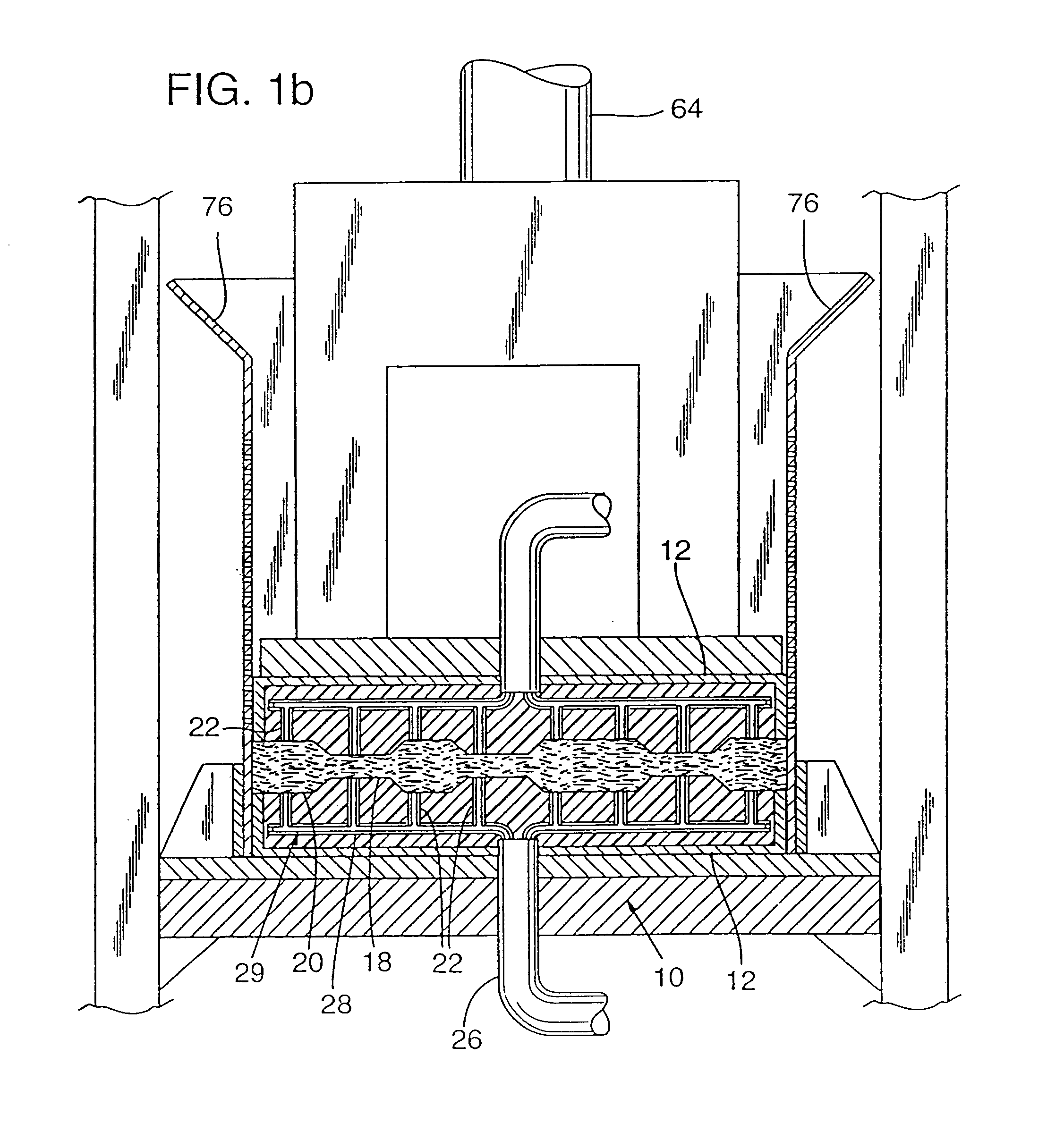Method of forming a thermoactive binder composite
a thermoactive binder and composite material technology, applied in the field of thermoactive binder composite material forming, can solve the problems of slow composite board production, small reduction of press time, and dramatic increase in press time, so as to facilitate proper wetting of filler particles, increase bonding, and increase the effect of final product strength
- Summary
- Abstract
- Description
- Claims
- Application Information
AI Technical Summary
Benefits of technology
Problems solved by technology
Method used
Image
Examples
Embodiment Construction
Platen
[0072] A platen 10 made according to the preferred embodiment of the present invention is shown in FIG. 1a. Platen 10 is designed to compress and deliver heat to a press charge in a press. Platen 10 includes a support frame 12 which holds a die 14. One surface of die 14 forms an inner face 16 for contacting the press charge. Inner face 16 may be made flat or formed with protrusions 18 and / or depressions 20 to shape the product being pressed as shown in FIG. 1b. Die 14 is formed of high temperature (600° F.) RTV rubber, such as Dow Chemical 3120 RTV Rubber, by casting. Protrusions 18 and depressions 20 are incorporated into die 14 directly during the casting process.
[0073] Platen 10 further includes a plurality of air jets 22 disposed in die 14 and opening onto inner face 16. Air jets 22 provide the injection points where the hot air is injected into the press charge. An air distribution manifold 24 is cast into die 14 and disseminates the hot air from two intake tubes 26 to ...
PUM
| Property | Measurement | Unit |
|---|---|---|
| Temperature | aaaaa | aaaaa |
| Temperature | aaaaa | aaaaa |
| Length | aaaaa | aaaaa |
Abstract
Description
Claims
Application Information
 Login to View More
Login to View More - R&D
- Intellectual Property
- Life Sciences
- Materials
- Tech Scout
- Unparalleled Data Quality
- Higher Quality Content
- 60% Fewer Hallucinations
Browse by: Latest US Patents, China's latest patents, Technical Efficacy Thesaurus, Application Domain, Technology Topic, Popular Technical Reports.
© 2025 PatSnap. All rights reserved.Legal|Privacy policy|Modern Slavery Act Transparency Statement|Sitemap|About US| Contact US: help@patsnap.com



